RUAG, which sells civilian ammunition under the brand name “RWS,” has a new and interesting ammunition they were showing off at NDIA. Their ammunition uses a solid copper bullet designed to shatter upon impact with a solid object such as a steel plate. RUAG claims that the minimum safe distance to target for this ammunition is “arms length.” Yes, you read that right. And that was a claim that we refused to believe until we saw it. Well, we just saw it . . .
We met these guys at the NRA Convention; they were making the same claims back then to our fearless leader. Who didn’t believe them. Apparently that made an impression on them, because when I introduced myself as a writer for TTAG at the NDIA symposium they mentioned it and invited me to stop by their live fire demonstration.
For normal “ball” handgun ammunition (round nose, lead core), USPSA (the competition shooting organization of choice for this writer) says the minimum safe distance for a steel target is 10 yards. For rifle rounds, the minimum safe distance is 100 yards. Any closer than that and the round might bounce back, hitting the shooter. Like this.
Shooting any steel targets poses a problem, as every projectile fired at the plate has the possibility to bounce back and endanger the shooter. Which is an issue, as steel is not only fun to shoot but cheaper in the long run. RUAG realized a need for a copper bullet that would disintegrate upon impact with steel. And that’s exactly what they’ve done.
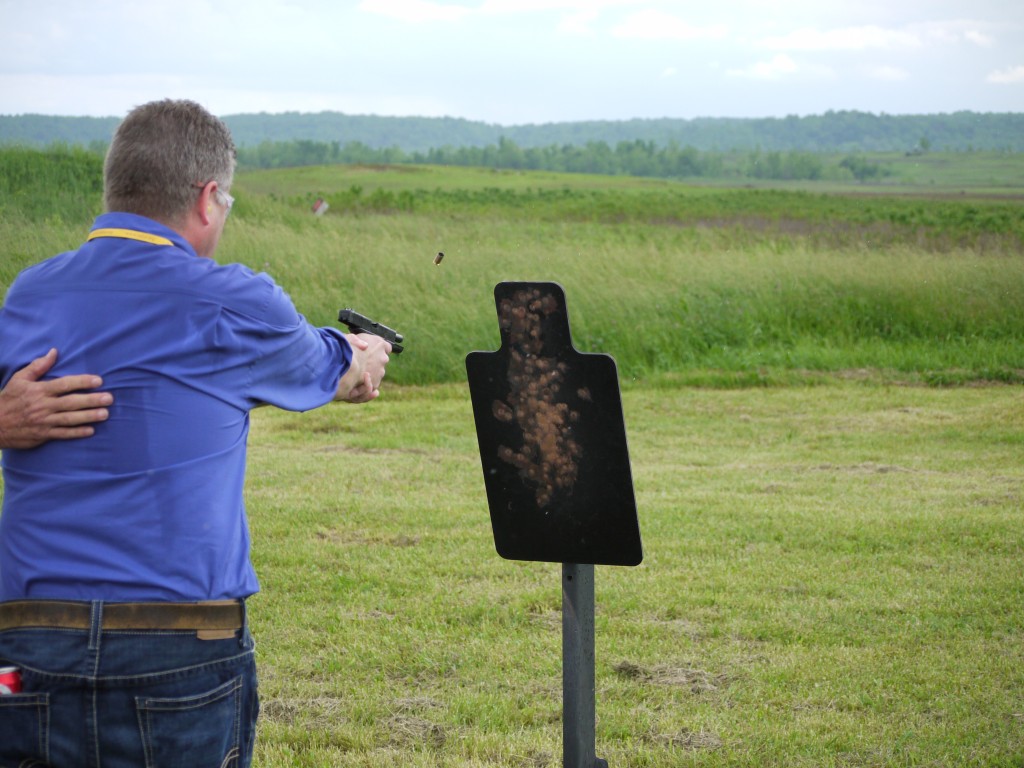 At the live fire demonstration RUAG had a couple crates of their frangible ammunition and a steel plate, and proceeded to make their case proving their claims. One by one, people would walk up and fire directly into a steel plate at just about arms length, and there were no fragments felt or seen coming back at the shooter.
At the live fire demonstration RUAG had a couple crates of their frangible ammunition and a steel plate, and proceeded to make their case proving their claims. One by one, people would walk up and fire directly into a steel plate at just about arms length, and there were no fragments felt or seen coming back at the shooter.
RUAG claims that the largest fragment coming off this ammo will still be smaller than 1% of the mass of the original bullet. They also claim that the fragments only bounce a few inches off the steel plate before dropping to the ground. Which is difficult enough for a low velocity round like a 9mm pistol. But how about a high velocity rifle round?
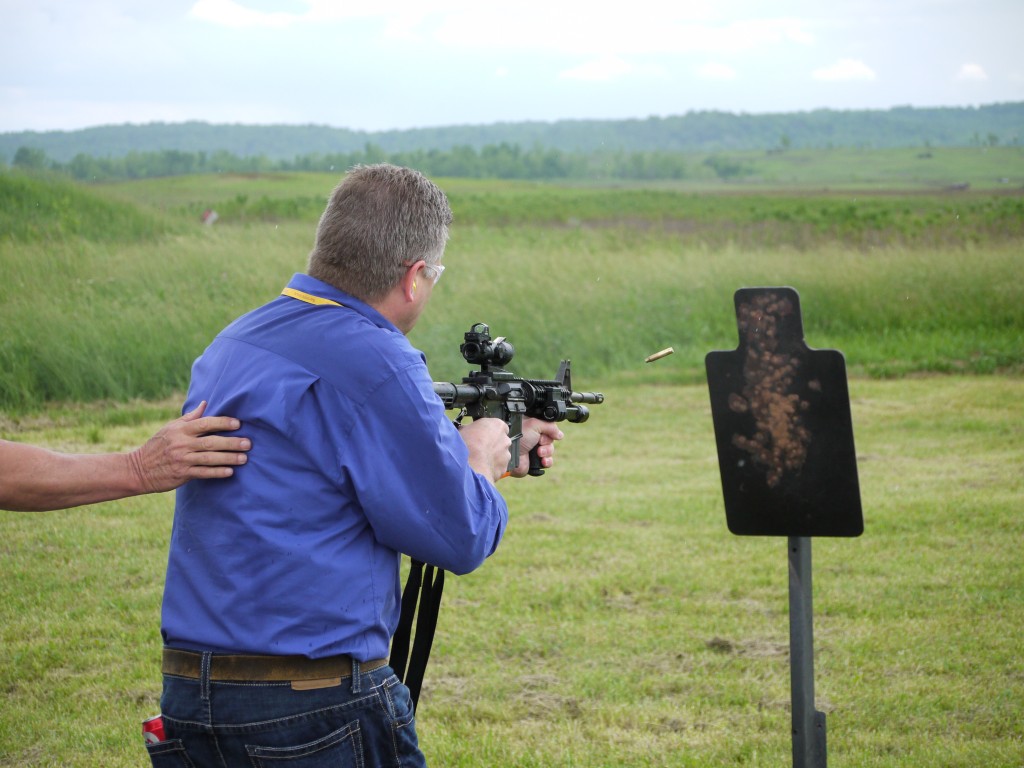 Yep, even with high velocity rounds the bullet still fragments and doesn’t bounce back into the shooter.
Yep, even with high velocity rounds the bullet still fragments and doesn’t bounce back into the shooter.
9mm is typically a 150 grain round running just slightly past supersonic speeds. 5.56x45mm NATO is a 55 grain bullet going about mach three. What about something bigger, like a 437 grain shotgun slug?
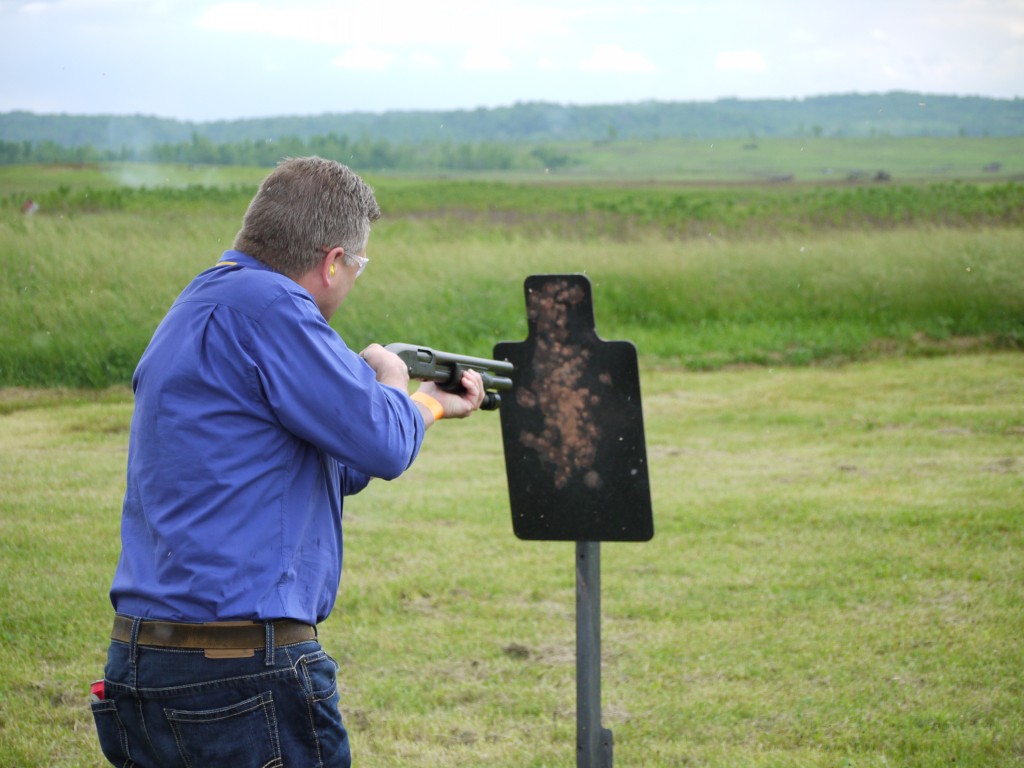 Slugs, buckshot… Doesn’t matter. Their copper bullets all fragment on impact, posing no threat to the shooter. But how about a target? RUAG claims that even though these rounds fragment on impact with hard stuff, they will still give the penetration needed to “put down” a target.
Slugs, buckshot… Doesn’t matter. Their copper bullets all fragment on impact, posing no threat to the shooter. But how about a target? RUAG claims that even though these rounds fragment on impact with hard stuff, they will still give the penetration needed to “put down” a target.
As you probably guessed, the shooting range is the ammo’s intended home. If the ammo doesn’t have any lead in it, the environmental impact mitigation requirements are not so high when designing the range. Air filters don’t have to be of such a high quality, and don’t need to be replaced as often, lowering the continuing costs as well.
The ammunition can also help with training. As was mentioned, when doing large amounts of training (e.g., an entire police department), the cost of targets can be a real hurdle. Steel targets are a one-time cost and easy to maintain. With standard ammo, steel targets for simulated close quarters engagements were are a non-starter. With the RUAG Copper-Matrix SX ammunition, there’s no danger from ricochets. Targets can be as close as the trainers want them to be.
So what about the “terminal ballistics?” They’re sending a couple boxes to TTAG to test; we’ll be sure to let you know how it turns out. But for their intended purpose, these rounds seem perfect for the job.

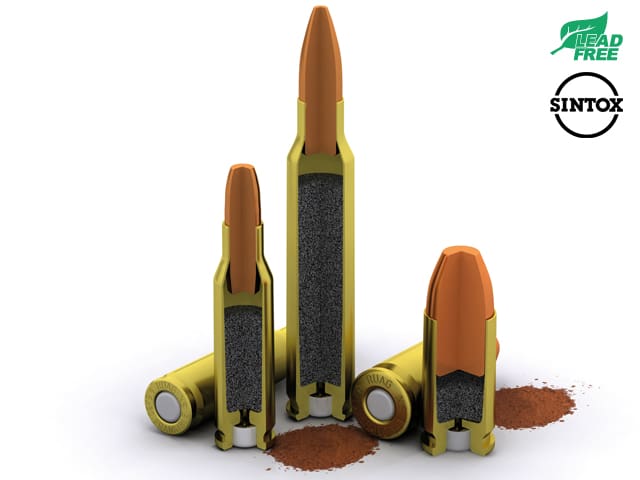
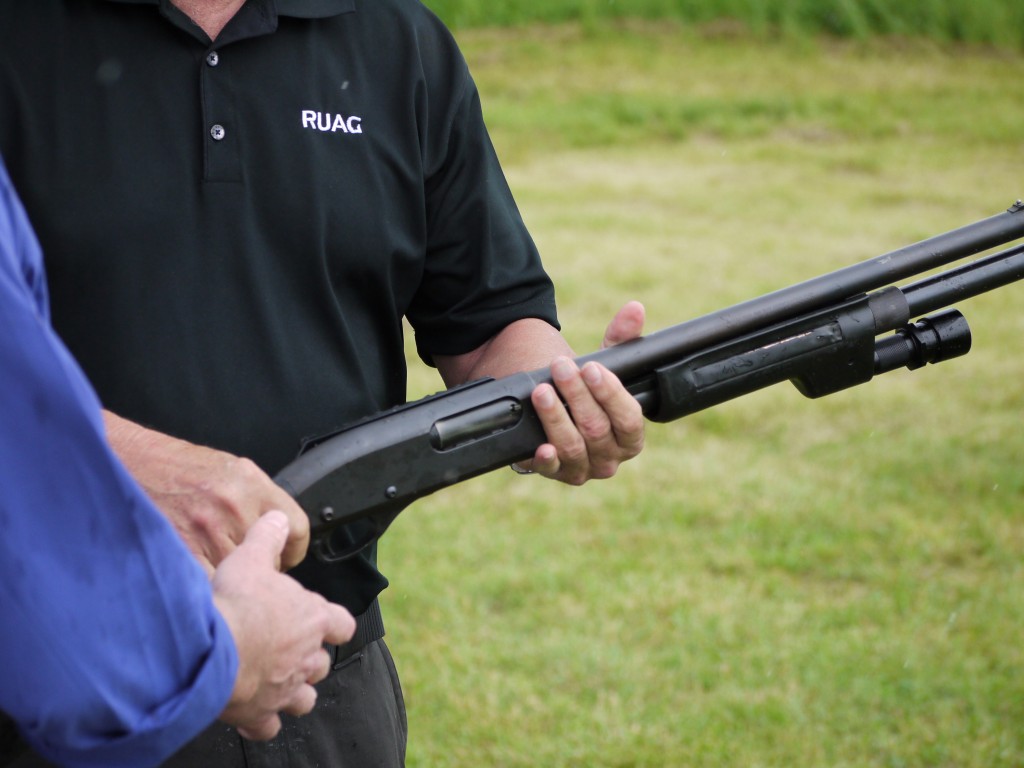



What’s the word on availability and cost? I have always been interested in non-ricochet, clean, and green ammo, but every time a new product comes out it seems to be either law enforcement only or priced so high it is out of reach to anyone with out the buying power of a local government.
Wouldn’t shooting such a highly frangible round in an enclosed shooting range possibly cause more air quality problems (sans lead)?
Would the bullet fragment particulates cause clouds of metallic dust that would settle on range surfaces, remain airborne, etc? Have they done extended live fire sessions emulating a typical indoor range scenario, i.e. a busy day with 10 lanes firing?
Good point – copper would likely be less of a concern, but testing would need to be done (by RWS). Copper has a much higher melting point than lead, and has a slightly higher hardness. However, these do not necessarily equate to lower dust/particulate generation. I don’t think that the fragmentation of the bullet is an issue at an indoor range, especially since most ranges have sufficient exhaust near the snail/rubber trap. The problem with lead exposure are the fine particulates that get generated just out of the muzzle and remain airborne for quite some time.
According to their website “copper particles are bound in polymer and cannot cause respiratory or filtering issues ” http://www.ruag.com/en/Ammotec/Defence_and_Law_Enforcement/Further_information/Frangible_Ammunition
The only listing I can find for their copper matrix bullets is on Cheaper Than Dirt. It lists an 85grain 9mm for about 46¢ a round.
From their web site:
“fragments loose their energy very quickly and aren’t dangerous after a short distance”
Loose? One of my pet peeves! Arrrrrgh!
I wonder if these can be used to shoot rifles on handgun-only ranges.
Unlike so many other gun-related inventions, this is something genuinely new, that might allow me to do something I couldn’t do before. If it lives up to its advertising, it’ll be a genuine advance. Very much looking forward to the results of your penetration tests.
Sounds like a good idea and I’m sure that in order for it to become a “new” thing, it’s gonna have to pass some type of regulation.